# 12 MARIUSZ “MARIO” JANISZEWSKI, Warsaw Documentary and Street Photographer

Leica Liker is honored to have Mariusz Janiszewski, a Warsaw (Poland) Documentary and Street Photographer as our #12 guest.
When you view many Mariusz’s (Mario) images, you can’t help but stay a while because there is so much to look at in a single image. He takes full advantage of his 28mm wide angle lens, capturing a fairly wide view to emphasize space and ambiance. In a sense, some of his photos hark of Atget’s visual document of Paris. The one thing they have in common: people going about their lives against the large backdrop of their environment.
In Mario’s photographs, the environment plays an equal, if not crucial, role to the humans who inhabit them. As if he is saying we are shaped by where we work and live.
What is fascinating is his choice of environments: shipyards, brickyards, fishing villages, etc.. Places where the environment is larger than the individual. Some of them have an epic quality to them. Yet, you can feel the quiet spirit of each person within the space. In our western world of automation, we forget that there are places that still build or deconstruct amazing things by hand.
Mario rarely shoots one-off images. He spends hours, days, weeks capturing a series of photos so we can experience not fragments, but segments of life. It is the combination of the images that create an overall impression of the subject rather than the reliance of a single image to encompass the message. His slow and patient way of documenting his subjects has given us a glimpse into the resilience of the human spirit.
Here’s my interview with MARIUSZ JANISZEWSKI:
Nick Name: Mario
Currently living in: Warsaw, Poland
Motto: I don’t have one.
Documentary and Street Photographer since: More than 10 years
Profession/Job: Commercial photographer
Websites: www.mariuszjaniszewski.pl, http://www.packshotstudio.pl
Organizations or Group: None
Having grown up in your formidable years (first 16 years) under communist rule before solidarity, how has it affected your photography?
I have never thought about it. I just remember the tanks on the streets and and people being arrested for having solidarity leaflets. However, for me, it’s the distant past and I do not connect it with the present.
Did you study photography or take seminars? How did it help shape your photography? No, I am self-taught, an autodidactic. I was a graphic designer working in a company when my boss told me he needed a photo of t-shirt with a logo. So I taught myself how to make the photo and from there I photographed things for the company. Over time, became a commercial photographer and gave up the graphic design.
As for my personal photographs, 10 years ago I started to photograph typical travel and vacation images in places like Egypt, China and Mexico. But when I saw the pyramids and visited many museums, I saw that there were other things to photograph. It was a pivotal time and bit-by-bit I began to delve deeper into the world of photography. I soon found people more interesting to photograph than old buildings. I started off using a long zoom lens from a distance. Then I met an experienced photographer who convinced me to shoot closer with a wider lens.
Favorite Camera & Lens: Leica M9 + Leica Elmarit 28mm/2.8
Back-up Camera & Lens: Zeiss Ikon + Leica Summilux 35/1.4 aspherical
Favorite photography gadget: Small dilapidated camera in hand, I do not need anything more and certainly no gadget.
Why do you like to shoot with a Leica M9? Do you own any other Leica film cameras? I use to own the Leica MP but abandoned it in favor of M9.
For me it is the only digital camera with analog look i.e. with the elusive flavor of analogue film. Another reason for the M9 is, it makes me invisible. Running around at dawn with a large DSLR camera is a bit like telling everyone – “Hey look, I’m a photographer!.” I photograph dilapidated areas, places of ruin and waste. With a DSLR it looks like I want to take a picture of their decline. It’s not the case with the M9. The small angular box hiding in my hand does not stir anyone’s attention and everyone feels free to continue with their work. I’m just a harmless passer by with an antique camera from the attic. Of course I know the weaknesses of the M9: low ISO range or when I shoot too much, it hangs up and doesn’t allow you to shoot for a few seconds. However, this is where I pay the price for what I need.
When do you choose to your Zeiss Ikon or Contax 645? The Zeiss Ikon is only an accessory backup which is more used to not being used. But the Contax is another matter. I love medium format. Here is the real power of negative film. Contax (or earlier hasselblad 203F) has a different approach to photography. It’s not a spur of the moment camera. It requires time and is therefore mainly used for portraits. It is always a compliment to documenting in quantity.
Favorite street food: Hindi (Indian) food
Do you listen to music while shooting? Never
Favorite music when shooting and/or editing Photos: Hindi music when I edit.
Favorite photo software: Nik Silver Efex 2
3 Favorite Master Photographers: Josef Koudelka, Sebastião Salgado, Henri Cartier-Bresson
3 Favorite Contemporary Photographers: Alex Webb, Francesco Zizola, Mariusz Janiszewski 😉
Which 3 photographers’ prints do you own? I do not have any. At my house I only have my photographs. But I passionately collect albums of other photographers. I love to have my morning coffee in hand with an album – slowly turning over page after page, and contemplating on each image.
Color or Black and White? I shoot 80% black and white. Black and white photography is much more pronounced while color draws attention.
Shoot Film or Digital? Digital. But only because using the Leica M9 feels like using a film camera and the final image is similar to analog film.
If Film, what type of negative? Kodak Portra, Kodak Tri-x Pan, Ilford HP5 Is there a special time of the day you like to shoot or is any time good? Best time is after 6PM. I love the beautiful color of the sun and great dark shadows.
How do you define street photography? Street is pure truth, without pretense, and it expands unnecessary beautification.
Why did you choose Street or Documentary Photography and not another form of photography or stamp collecting? My photographs teeter between two styles- documentary photography and street photography with an emphasis on the first. Street photography can frame humor in life whereas documentary photography frames bare reality.
What motivates you to photograph the streets? It needs no motivation. It is pure pleasure, catching in the frame of truth is in some sense to me escape from work. I am an advertising photographer where truth recedes. I love the uncertain factor of what could happen in a particular moment.
Is Street Photography an obsession? Obsession is a strong word but it really fully reflects my approach. When I leave the house I can forget everything but never the camera and keys.
Are you a lone shooter or do you like shooting with friends or a group? A group attracts attention. We become visible from a distance. It’s best to photograph alone or in pairs, but no more. Only then do I feel I have the opportunity to make a good photo.
Are you an invisible photographer or visible? Depends on the circumstances, but I try to be invisible. Only then is there the biggest chance for a good picture. You can then assimilate into the environment and wait for the right moment. Street or documentary photography is not racing.
Favorite street or documentary photography city: Calcutta, India. It has a classic blend of modernity, swarms of people, chaos … I generally like to shoot in the crowd. And Calcutta offers the ideal place in between a crowd of people.
What inspires your photography? Great photographers inspire me. Studying their sensitivity increases my awareness of photographic opportunities. It’s not about copying their ideas in a certain direction, but to open our eyes to other ways of showing the world.
Is there a philosophy, concept or aesthetic behind your compositions that you apply to your photos? Philosophy implies too much said. It is more about the beauty I see where to others it might only be dirt and chaos.
You do product photography. How does advertising photography affect your work? How does it affect how you see light? Product and promotional photography is all about taking care of details. Every little nuance there is important. Every mistake can make the picture be perceived positively or negatively. I think this is what is most important and it is translated into my pictures. When I shoot, I try to pay attention to the little things. Of course, there is no way of correcting fact. It matters more when composing the crop, looking at nuances in the background which could be an added advantage. Mastery of light, is also important. However, I’m not a fan of flashing in documents.
Do you shoot a lot? Certainly much less than one or two years ago. I’m not a fan of shooting a series and then hoping that something will come of it. Trust your intuition and try to predict when to press the shutter button.
What do you look for in a good photograph by others? A good photo must stop you and ask you to focus on the vision. It encourages you to reflect. It induces one to think. The image must have a message. The story in the photo should stimulate the imagination.
How do you choose your shots when you edit? What tells you that the shot is good? I choose the pictures that arrest my attention for a long time. The images also should not be limited to one strong focusing point. I like to look at an image that allows my eye to jump around. Like trying new flavors.
Why do you choose to shoot in underdeveloped places? Why not in Poland? I always liked the exotic. Of course, in my country you can find lots to shoot. But Asia and Africa has always fascinated me. One can say just go out on the Indian streets and the camera will the rest. Only those who were in those places, know that’s half the knowledge of the truth. I love the contact with the locals. The cultural gate opens completely different problems, problems which you aren’t familiar with. Additionally it is also pulling away from everyday life, from domestic issues, from problems. The phone is switched off, the internet does not tempt. It’s just me and the camera.
Why do you prefer to shoot a series or photoessay? Can you give some advice on creating a series or photo essay, rather than a one-off photos? I think the photo essay is the next step on the path of photography. Anyone can shoot one photo, even if only by accident. A series requires you to study a subject. It asks you what you want to achieve. You have to report on it, to focus on the many aspects of which with a single photograph is not achievable.
Best 3 tips for shooting the streets: Patience, reflexes and smile. A positive attitude is very important. It’s how we are perceived. If we are positive, half the work is already done. Then just wait for the right time and make quick decisions to capture that one single moment.
Best single advice on how to improve your work: It’s important to be in critical terms with your own work all the time. Don’t be quick to say it’s perfect because you can’t go back.
Best single advice on how to edit your work: No matter how many times we play with the sliders for contrast, light or dark, or how many layers we work with in software programs, the final result should look natural from an invisible hand.
Best single advice for someone who wants to get into street or documentary photography: The picture has to tell the story and not be an empty cage. Without the story, then everything else goes by the wayside, such as whether the subject is valid, exposition, and other aspects. Today, unfortunately, there seems to be greater emphasis on whether the picture is sharp and hit the point than on what content it presents.
What’s the best moment in your street photography career? Bangladezi bazaar. Amidst the background of poverty 2 girls stand out, collecting waste from the ground. I approached them with my friend and we told ourselves that they can choose whatever they want, and we’ll pay for it. We ended up walking the whole bazaar and escorted them to a rickshaw carrying their nets filled with food. Watching these girls, which started from helplessness and emptiness in their eyes, through fear of an unusual situation, turning into unimaginable joy in their eyes… oh, it was an unforgettable moment.
What’s the worst moment in your street photography career? Visiting the bazaar in my town. The hostility I’ve encountered from my own people was incredible as I was the epitome of the evil photographer.
What projects are you working on? I’ve begun collecting material on the mines in the world, plus a few other ideas which are too early to tell.
here do you want to be in 5 years with regard to street photography? On top 😉 The future is too far away. I am focusing on preparing the nearest project. On the one hand it’s important that progress is constant. On the other hand I want to stil find pleasure in photography the next 5, 10 or 15 years.
Are there exhibitions planned in the future? One of the galleries in Warsaw will exhibit my photos, probably in the fall. You’ll also be able to see them somewhere else but the details are not known. And who knows about the plans for the 2013 crop. I don’t want to speak about them lest I jinx them.
Leica Liker thanks Mario for sharing his experience and inspirational advice with us. We look forward to checking in on him in the future.
You can check out Mario’s’s gear in “Liker Bags’n Gear” here.
Here is Mario’s self portrait.
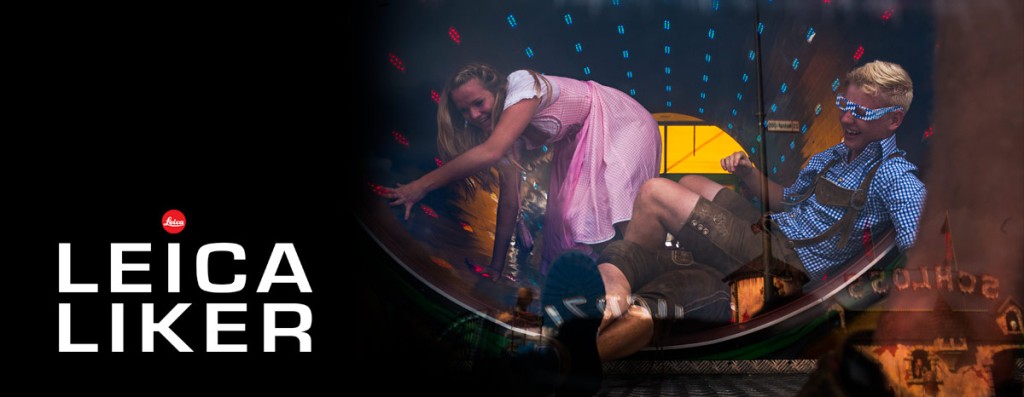
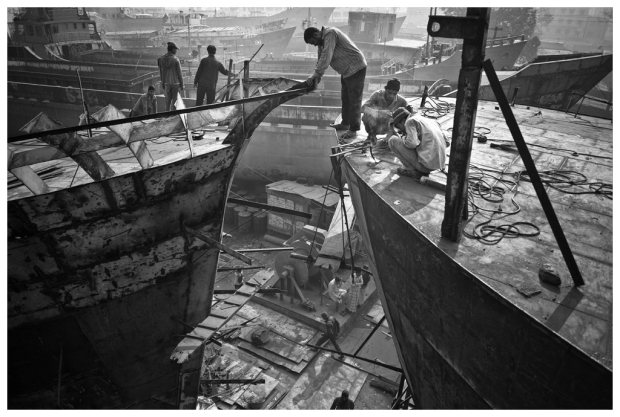
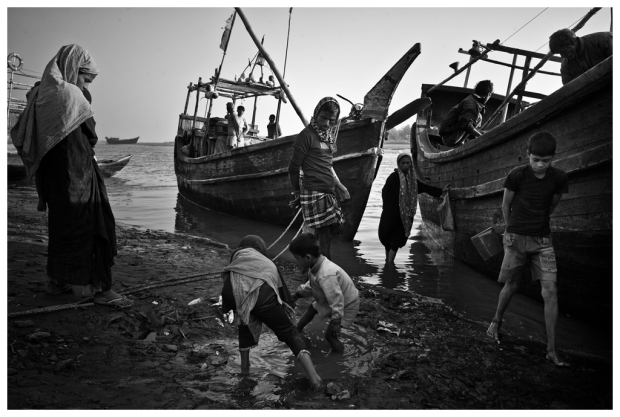

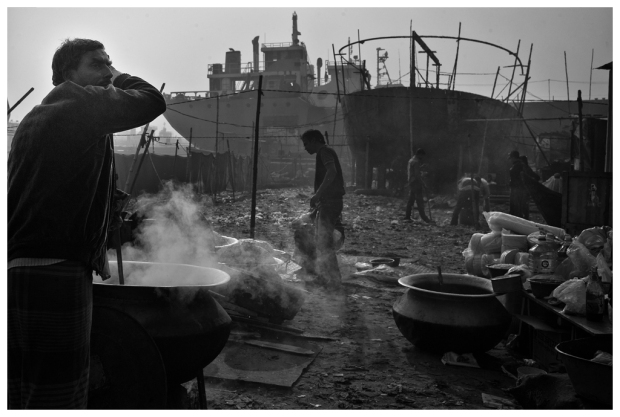


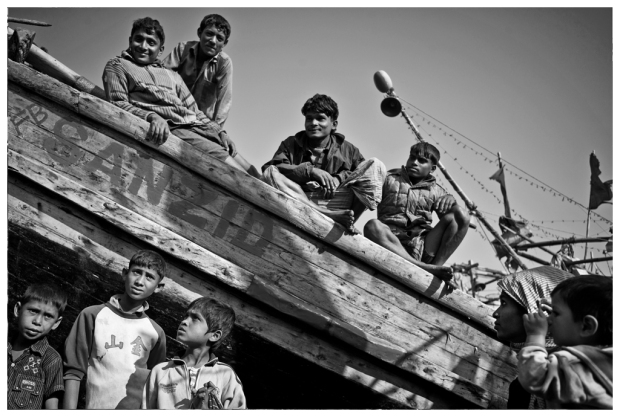

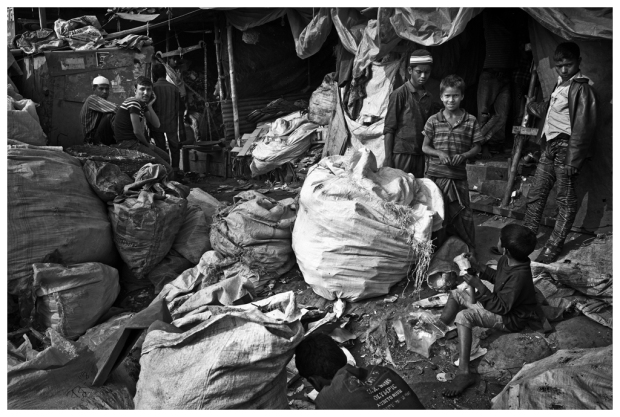






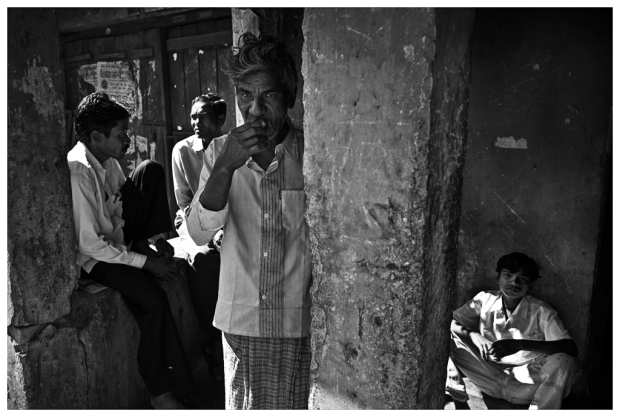





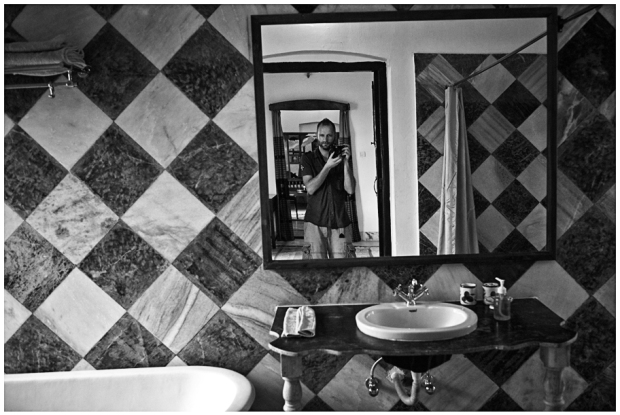








Great shots.
Excellent photographer and article.
Thanks,
Alan G
My God . . this is a beautiful body of work !
Inspirational for photo enthusiasts
I really like Marios approach to photography – very much so.
…oh, and the photos are fabulous!
That comment above – about inspiration – was ment for Twitter.
Thank you so much for posting this interview with Mariusz. I saw his exhibition at the Leica Gallery in Warsaw last summer, and was blown away by his strong compositions of people in places that often have social issues attached to them (like the brick factories in Bangladesh or Happyland in Manila.) Great to hear him talk about his work.
One of the best blogs about street photography I have read so far. Thank you for sharing.
Thanks Vladimir!!!